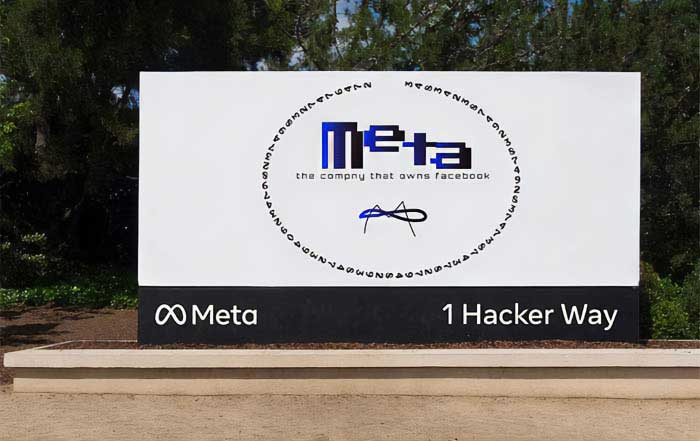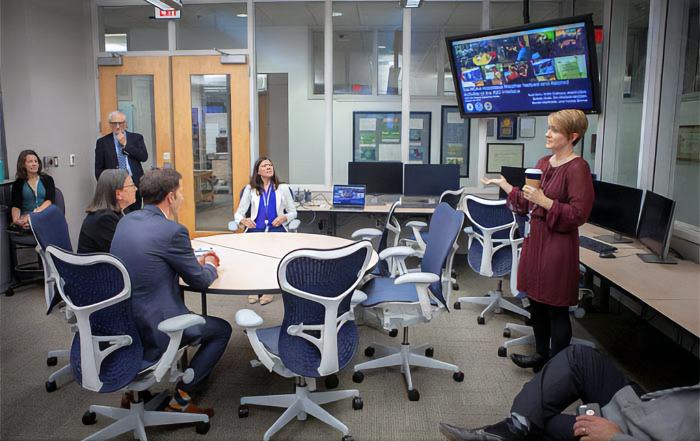The intersection of digital innovation, economic uncertainty, and evolving investor behavior has reshaped the global financial ecosystem. Business opportunities across commodities, cryptocurrencies, stocks, FOREX, and government bonds are expanding in ways that reward adaptability, strategic foresight, and technological sophistication. For forward-looking professionals and organizations featured on TradeProfession.com, these markets represent both immense potential and complex challenges that demand informed, disciplined participation.
From AI-driven trading algorithms to the rise of decentralized finance (DeFi) and the renewed global focus on green energy commodities, investors and enterprises now navigate a financial environment more interconnected than ever before. Understanding how these asset classes interrelate, and where technology and policy trends converge, has become the cornerstone of financial opportunity in this decade.
The Re-Emergence of Commodities in a Resource-Constrained World
A Return to Tangible Value
The global shift toward sustainability and energy independence has reinvigorated commodities trading in 2025. The world’s appetite for raw materials such as lithium, copper, nickel, and rare earth elements—all essential for the production of electric vehicles, renewable energy systems, and advanced electronics—has driven a new wave of strategic investment.
Countries like Australia, Chile, and Indonesia have positioned themselves as major exporters of these resources, with governments enacting policies to stabilize export markets and attract foreign investment. For example, Indonesia’s downstream nickel policies have spurred international capital inflows into local refining industries, creating multi-billion-dollar partnerships between state entities and private companies.
Meanwhile, gold and silver continue to play their traditional roles as safe-haven assets amid inflationary pressures and geopolitical risks. The recent volatility in fiat currencies has renewed interest in precious metals ETFs, mining stocks, and futures contracts.
Digital Commodities and Tokenized Assets
The concept of tokenized commodities—where physical assets are digitally represented on blockchain—has become a fast-growing niche. Platforms are enabling investors to own fractional shares of gold bars, crude oil reserves, or agricultural outputs using blockchain-secured tokens, bridging traditional markets with emerging crypto ecosystems.
Learn more about how innovation is transforming physical asset ownership and investment accessibility worldwide.
2025 Asset Class Navigator
Explore investment opportunities across global markets
Market Drivers
🔋Green Energy Transition:Demand for EV materials driving lithium, nickel, and copper prices
🌍Major Exporters:Australia, Chile, Indonesia leading supply chains
💎Tokenization:Blockchain-based fractional ownership revolutionizing access
Asset Allocation Calculator
Cryptocurrency: From Speculative Assets to Institutional Frameworks
The Institutionalization of Digital Finance
By 2025, cryptocurrency has matured beyond its early speculative image. Institutional investors, including BlackRock, Fidelity, and Goldman Sachs, have deepened their involvement through crypto-backed ETFs and tokenized funds. The regulatory clarity emerging across regions like the European Union under the MiCA framework (Markets in Crypto-Assets Regulation) has accelerated this shift.
Bitcoin remains the benchmark, but Ethereum, Solana, and Polkadot lead the charge in smart contract applications that power DeFi, NFT infrastructure, and Web3 commerce. Businesses leveraging blockchain technology are finding real-world utility in supply chain transparency, digital identity, and cross-border payments.
Decentralized Finance and the Rise of Utility Protocols
Decentralized finance (DeFi) platforms such as Aave, Uniswap, and Compound are transforming how traders and enterprises interact with liquidity. In 2025, the integration of AI-driven analytics with DeFi protocols has reduced risk exposure by improving the predictive modeling of liquidity flows and token volatility.
Meanwhile, central bank digital currencies (CBDCs) introduced by major economies—including the Digital Euro, Digital Yuan, and pilot programs from the Federal Reserve—are redefining how fiat and digital money coexist. Businesses engaging in global trade now face hybrid payment ecosystems that require advanced financial literacy and compliance strategies.
Explore the latest developments in cryptocurrency and how blockchain ecosystems are shaping the next era of investment.
Stock Market Dynamics in a Digitally Transformed Economy
Global Equity Trends in 2025
The global stock market remains a reflection of economic confidence and technological progress. Despite market corrections following periods of inflationary tightening, 2025 has seen renewed optimism as companies adopt AI integration, sustainability frameworks, and green innovation as core business strategies.
NASDAQ, NYSE, and London Stock Exchange continue to lead the global equity landscape, with emerging markets in India, Vietnam, and Nigeria drawing increasing investor interest due to strong GDP growth and favorable demographics. The inclusion of AI-powered automation within corporate governance and investment analysis has become a defining factor of stock valuation trends.
Tech giants such as NVIDIA, Apple, and Microsoft are expanding their presence in AI computing, semiconductor infrastructure, and cloud ecosystems, while new entrants in biotech, clean energy, and quantum computing redefine the narrative of growth sectors.
ESG Investing and the Sustainability Premium
Investors are rewarding companies that demonstrate long-term sustainability. Environmental, Social, and Governance (ESG) performance has evolved from a marketing buzzword into a financial indicator of resilience and trust. Global investment funds now allocate trillions toward ESG-compliant portfolios, aligning with initiatives like the UN Sustainable Development Goals and COP climate targets.
Visit sustainable business insights to learn how ESG considerations influence long-term stock performance.
AI-Driven Portfolio Management
AI has redefined stock trading efficiency. Predictive models now process real-time sentiment data, macroeconomic indicators, and historical patterns to identify optimal buy-sell windows. AI-powered platforms such as Bloomberg Terminal’s GPT Analytics, Morgan Stanley’s NextGen AI Portfolio, and Robinhood Quantum Tools have transformed accessibility for both institutional and retail investors.
To understand how AI shapes business strategy, explore Artificial Intelligence insights on TradeProfession.
FOREX Trading: Navigating Volatility and Opportunity
The Expanding Complexity of Currency Markets
The global foreign exchange (FOREX) market, valued at over $8 trillion in daily turnover, remains the most liquid and dynamic of all asset classes. In 2025, geopolitical uncertainty, divergent monetary policies, and the shift toward digital currencies have intensified volatility across major pairs.
Traders and institutional investors must navigate a world where interest rate differentials, AI forecasting, and geopolitical sentiment drive short-term price swings. The USD, EUR, GBP, JPY, and CNY remain dominant, but regional currencies in ASEAN and Africa have gained strength as emerging economies assert greater independence in trade settlements.
Platforms such as MetaTrader 5, cTrader, and Interactive Brokers now integrate machine learning algorithms that continuously optimize position sizing, leverage, and risk exposure. Businesses engaged in cross-border commerce have increasingly turned to algorithmic FOREX strategies to hedge currency risk and improve operational efficiency.
The Rise of Stablecoins in Currency Hedging
The use of stablecoins such as USDC, Tether, and PayPal USD has grown significantly in FOREX trading as businesses seek faster settlement and reduced counterparty risk. Stablecoin liquidity pools allow for near-instant global transfers, bridging fiat and crypto ecosystems with increasing stability.
These developments have made FOREX not only a domain for traders but also a strategic tool for global businesses managing multi-currency exposure. Learn more about global finance trends driving currency innovation.
Government Bonds and the Return of Fixed-Income Investment
The Bond Market Revival in 2025
After a decade of declining yields and inflation-driven uncertainty, the government bond market has re-emerged as a safe harbor for conservative investors. Central banks’ efforts to stabilize inflation and recalibrate interest rates have created favorable conditions for long-term government debt instruments.
In 2025, U.S. Treasury bonds, German Bunds, UK Gilts, and Japanese Government Bonds (JGBs) continue to serve as benchmarks for global fixed-income portfolios. Meanwhile, developing countries are offering sovereign green bonds and infrastructure-linked securities to attract sustainable investment capital.
Institutional investors are particularly drawn to inflation-protected securities (TIPS) and high-grade municipal bonds, which combine steady returns with lower volatility compared to equities or crypto assets. The increasing digitalization of bond issuance—through blockchain-enabled smart contracts—is also enhancing transparency and efficiency.
Tokenized Bonds and Digital Debt Markets
The rise of tokenized bond markets has democratized access to government securities. Platforms like Swiss Digital Exchange (SDX) and European Investment Bank (EIB) initiatives have introduced blockchain-based issuance models that allow fractional ownership and improved liquidity. This innovation aligns with the broader digitization of global finance, making it easier for smaller investors to participate in traditionally institutional markets.
For in-depth insights on long-term investment trends, visit investment analysis on TradeProfession.
The Convergence of Asset Classes: Hybrid Strategies for the Modern Investor
The boundaries separating asset classes have become increasingly fluid. In 2025, a sophisticated investor may hold a portfolio blending commodity futures, cryptocurrency staking rewards, tech equities, FOREX hedges, and sovereign bonds, all within a unified digital trading ecosystem. Platforms such as Binance Institutional, Interactive Brokers Global Trader, and Charles Schwab International Account offer multi-asset exposure, enabling businesses and individuals to diversify across borders and currencies seamlessly.
Institutional adoption of AI-driven portfolio management systems has enhanced predictive analytics and risk-adjusted returns. These systems analyze correlations between asset movements, for example, how rising oil prices may strengthen the Canadian dollar or how shifts in gold valuation influence emerging market equities. Such insights empower investors to make strategic cross-market decisions.
As global investment opportunities expand, the fusion of digital intelligence and financial expertise defines success in this interconnected era.
Opportunities for Entrepreneurs and Businesses
Building Fintech Solutions in Trading Infrastructure
The rapid digitization of finance has opened doors for entrepreneurs to build trading platforms, analytical tools, and blockchain-based clearing systems. Fintech startups are developing AI-enhanced trading bots, social investing platforms, and compliance automation solutions that cater to both retail traders and institutional clients.
In major innovation hubs like Singapore, London, and New York, fintech incubators support startups focusing on trading analytics, risk modeling, and cross-border payment gateways. Companies such as Revolut, eToro, and Robinhood have set the precedent for integrating user-friendly interfaces with powerful data analytics.
Learn more about emerging opportunities in technology and innovation shaping modern finance.
The Rise of Education Platforms for Financial Literacy
As financial markets grow in complexity, the demand for accessible and accurate education has surged. Online academies, digital universities, and content platforms now provide courses on FOREX fundamentals, cryptocurrency investment, and quantitative analysis for both beginners and professionals.
Businesses entering the education sector are leveraging interactive content, AI tutors, and gamified simulations to attract learners worldwide. Major education platforms like Coursera, Udemy, and Khan Academy have expanded their finance divisions, while specialized players such as Babypips, Binance Academy, and Investopedia Academy continue to dominate niche training markets.
Discover related insights on education and employment for developing financial expertise and career pathways.
Regional Perspectives: Where the Opportunities Lie
North America
The United States remains a global leader in equities, commodities, and bond markets. Wall Street’s dominance is complemented by Silicon Valley’s fintech innovation. U.S.-based funds are increasingly turning toward AI-assisted algorithmic trading and quantum computing models that execute high-frequency trades in milliseconds. Canada, meanwhile, is a hub for natural resources and green energy investments, offering opportunities in lithium, uranium, and carbon credit trading.
Europe
Europe’s financial evolution centers around sustainability and digital regulation. The European Central Bank’s Digital Euro project has reshaped FOREX and cross-border settlements. European exchanges, led by Euronext and Deutsche Börse, have diversified listings to include green ETFs, carbon markets, and digital bonds. Germany, France, and the Netherlands are also attracting cryptocurrency custodians and fintech startups aligned with MiCA-compliant frameworks.
Asia-Pacific
Asia’s influence on the global financial system is undeniable. China’s Digital Yuan, Japan’s innovation in blockchain infrastructure, and Singapore’s crypto-friendly policies have fostered a competitive yet collaborative environment. The Hong Kong Stock Exchange (HKEX) has become a magnet for AI-driven and renewable energy IPOs, while Australia continues to expand its commodities leadership through gold, coal, and lithium exports.
Emerging economies such as Vietnam, Thailand, and Malaysia are developing regional trading hubs supported by improved regulatory clarity and access to global liquidity. Investors seeking diversification now view Asia not just as a production base but as a financial powerhouse.
The Middle East and Africa
The Middle East, led by Dubai and Saudi Arabia, has become a hub for cryptocurrency adoption and oil-based tokenization initiatives. The Abu Dhabi Global Market (ADGM) now licenses blockchain-based exchanges, linking digital asset trading to traditional energy markets.
Africa’s opportunities lie in commodities, digital banking, and FOREX innovation. Countries like Nigeria, Kenya, and South Africa are witnessing fintech-led revolutions that allow small traders and entrepreneurs to participate in global markets via mobile-first applications. Blockchain adoption is improving transparency in commodity exports, particularly for gold and cocoa.
Learn more about global economic shifts that shape trade and investment across continents.
The Influence of Artificial Intelligence in Financial Decision-Making
Predictive Trading and Quantitative Analysis
Artificial intelligence has moved from theoretical models to live trading floors. AI systems now analyze terabytes of global data—from macroeconomic indicators to real-time social media sentiment—to anticipate market shifts before they occur. Hedge funds and institutional investors employ deep learning models capable of identifying subtle patterns invisible to human traders.
Goldman Sachs, J.P. Morgan, and Citadel Securities have adopted proprietary machine learning systems that adjust portfolios based on dynamic conditions such as supply shocks, inflation data, or cryptocurrency movements. Smaller firms leverage cloud-based AI systems like Alpaca, QuantConnect, and DataRobot for algorithmic forecasting and backtesting.
To explore how AI transforms business operations and investment strategy, visit Artificial Intelligence.
Sentiment and Behavioral Analytics
AI is also driving behavioral finance innovation. Algorithms evaluate investor sentiment through linguistic and emotional cues on social media platforms like X (formerly Twitter) and Reddit, where discussions on stocks, crypto tokens, and commodities influence real-world price movements. By combining natural language processing (NLP) with machine learning, financial firms now quantify emotional volatility in the same way they assess statistical risk.
Sustainability, Ethics, and the Future of Trading
Responsible Investing and Climate-Linked Markets
The fusion of ethics and finance has led to a new era of responsible capitalism. In 2025, investors no longer seek profit alone—they demand purpose-driven investment. Carbon credit exchanges, sustainable ETFs, and impact investment funds are flourishing across Europe and Asia, reflecting global efforts to align capital flows with the Paris Agreement and net-zero goals.
Major commodity exchanges such as CME Group and London Metal Exchange (LME) have launched carbon-neutral trading instruments, allowing investors to hedge environmental impact. Sovereign green bonds from countries like Sweden, Norway, and Japan are funding renewable infrastructure projects that combine economic growth with environmental integrity.
Learn more about sustainable business practices redefining investment priorities in 2025.
Tokenization of Real-World Assets and the Digital Economy
The tokenization of real-world assets (RWA) is reshaping ownership and liquidity across asset classes. Governments and corporations are experimenting with blockchain-based frameworks that represent everything from real estate and fine art to equity and debt instruments as digital tokens.
Platforms such as Securitize, tZERO, and Tokeny enable regulated trading of tokenized securities, merging traditional compliance with decentralized infrastructure. This innovation democratizes access to previously illiquid assets and is expected to unlock trillions in value by 2030.
Risk, Regulation, and Security in Global Markets
The Role of Regulatory Frameworks
Financial regulators are adapting rapidly to maintain market integrity amid innovation. The U.S. Securities and Exchange Commission (SEC), European Securities and Markets Authority (ESMA), and Monetary Authority of Singapore (MAS) have all introduced new guidelines for crypto assets, AI-based trading, and digital identity verification.
Regulation is not seen as a barrier but as an enabler of trust. In fact, businesses that comply with evolving standards often gain a competitive advantage through investor confidence. Know Your Customer (KYC) and Anti-Money Laundering (AML) systems have become AI-powered, allowing for instantaneous verification across jurisdictions.
For professionals navigating this space, understanding legal frameworks is as essential as mastering technical skills. Stay informed with executive insights on compliance and financial governance.
Cybersecurity and Data Protection
As trading moves fully online, cybersecurity has become a cornerstone of financial infrastructure. The rise in AI-enhanced phishing, exchange hacks, and data breaches has prompted exchanges and brokers to invest heavily in encryption, biometric authentication, and blockchain verification layers.
Organizations such as CyberArk, CrowdStrike, and Palo Alto Networks are at the forefront of developing digital defenses for trading institutions. For businesses, implementing robust cybersecurity frameworks is no longer optional—it is a fiduciary responsibility.
The Future Outlook: Integration, Intelligence, and Inclusion
The next decade promises a convergence between financial inclusivity, technological intelligence, and sustainable globalization. The growth of decentralized platforms and tokenized assets will reduce entry barriers, while AI will continue to refine precision trading and macroeconomic forecasting.
Emerging markets will play a crucial role in diversifying global liquidity, while Western economies focus on regulatory refinement and institutional trust. Meanwhile, the fusion of human creativity and machine intelligence will define a new paradigm of “augmented investing,” where professionals collaborate with AI to manage complexity rather than compete against it.
Business leaders, entrepreneurs, and investors who embrace data literacy, cross-asset diversification, and ethical transparency will be best positioned to thrive in this evolving landscape.
For comprehensive insights into global finance and innovation, explore TradeProfession.com, where the world’s most influential ideas on banking, technology, investment, and sustainability come together to shape the business world of tomorrow.










